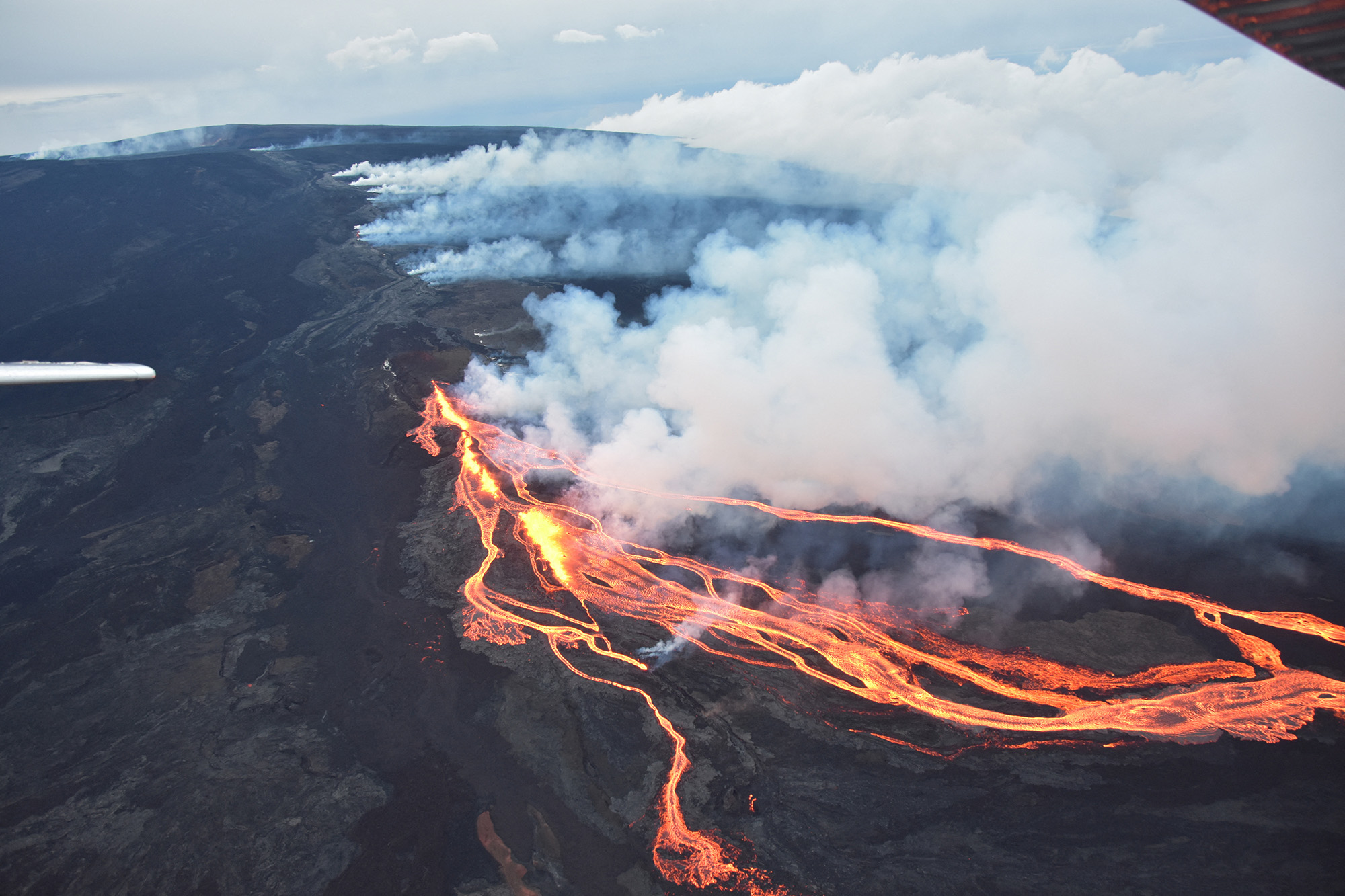Drivers are warned of lava inching toward a key highway as 2 volcanoes erupt in Hawaii
(CNN) — Days after rare dual volcanic eruptions in Hawaii, officials are urging people not to park vehicles along a key highway because lava is flowing nearby.
Kilauea, located inside Hawai’i Volcanoes National Park, has been active for more than a year — and neighboring Mauna Loa erupted Sunday.
Hawaii officials have said the simultaneous eruptions of Mauna Loa and Kilauea on the Big Island are not threatening homes or nearby infrastructure.
But, by Tuesday, Mauna Loa’s lava had flowed to a point about 4.5 miles from Saddle Road, the main highway running across the center of the Big Island, according to the US Geological Survey.
In response, the Hawaii County Civil Defense is urging drivers not to park along Saddle Road. “HPD will be giving citations and towing vehicles parked between mile markers 16-31”, the agency said in a Facebook post.
This week marked the first time in nearly 40 years that the two volcanoes — which are about 21 miles apart — have erupted together. The rare sight grew even more spectacular Tuesday when two new lava flows were seen streaming down Mauna Loa, according to the geological agency.
National park officials say the double eruption is bound to attract many visitors seeking a peek at the glowing rock.
And although there are no known immediate risks to property, air quality could be impacted by hazards such as vog, or volcanic smog, state officials have warned. Volcanic gas, fine ash and Pele’s Hair (strands of volcanic glass) could be carried downwind, the geological survey said.
The Hawaii health department warned residents and visitors that they should be ready for compromised air quality, including “vog conditions, ash in the air, and levels of sulfur dioxide to increase and fluctuate in various areas of the state.”
Children, the elderly and those with respiratory conditions should reduce outdoor activities that cause heavy breathing and reduce exposure by staying indoors and closing windows and doors if vog conditions develop, the health department said.
Hawaii Gov. David Ige signed an emergency proclamation Tuesday to direct resources and aid response to Mauna Loa’s eruption. The state’s National Guard is also on standby, and the state Emergency Management Agency has activated its emergency operations center, Maj. Gen. Ken Hara, adjutant general for the state’s defense department, said during a news conference.
Mauna Loa eruptions can be “very dynamic”
Mauna Loa’s eruption earlier this week was meaningful beyond the rarity and thrill of witnessing the dual eruptions. For Native Hawaiians, the sites of eruptions carry cultural significance. “While an eruption is an exciting experience, keep in mind you are observing a sacred event. Kīlauea and Mauna Loa volcano are wahi kapu (sacred landscapes) surrounded with storied places,” the national park’s website says.
Standing at 13,681 feet above sea level, Mauna Loa — the world’s largest active volcano — gushed fountains of lava as tall as 200 feet Monday, according to the geological survey. The eruption was concentrated in Mauna Loa’s Northeast Rift Zone, where lava was flowing from at least one split in the volcano, the geological survey said.
“Based on past events, the early stages of a Mauna Loa rift zone eruption can be very dynamic, and the location and advance of lava flows can change rapidly,” the geological survey said earlier this week.
The eruption and lava flow have also cut off power and impeded access to a critical climate tool used to maintain the so-called “Keeling Curve,” which is the authoritative measurement of atmospheric carbon dioxide and vital scientific evidence for the climate crisis. The Keeling Curve graph is comprised of daily carbon dioxide concentration measurements taken at Mauna Loa since 1958.
“It’s a big deal. This is the central record of the present understanding of the climate problem,” said Ralph Keeling, a geoscientist at the Scripps Institution of Oceanography at the University of California in San Diego and son of the Keeling Curve creator.



